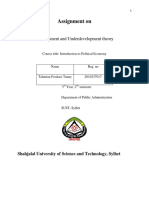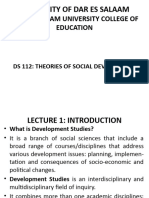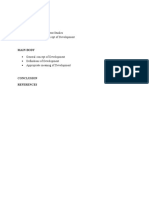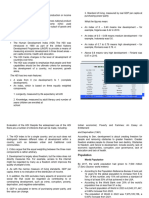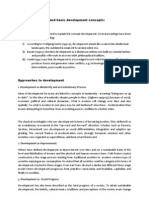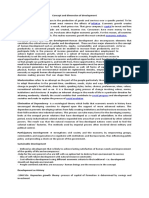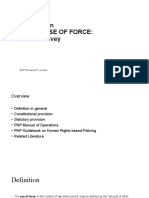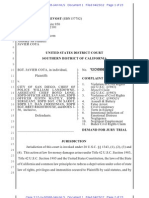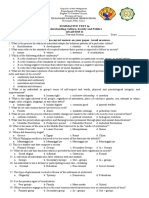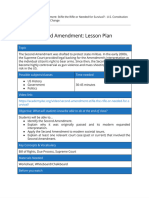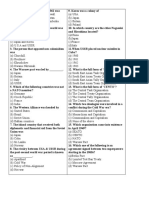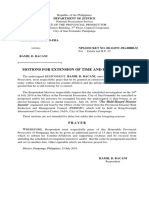0% found this document useful (0 votes)
28 views9 pagesDev 1150 Lecture Notes
The document discusses the evolving definitions and theories of development, highlighting various perspectives from notable theorists such as Gunna Myrdal, E.W. Weidener, and Dudley Seers. It explores the shift from economic growth to a focus on human welfare, basic needs, and the multidimensional nature of development, while also addressing the characteristics and challenges faced by developing countries. Additionally, it examines poverty types, poverty alleviation strategies, and the critical role of agriculture in achieving food security and economic growth.
Uploaded by
tumelokayaka5Copyright
© © All Rights Reserved
We take content rights seriously. If you suspect this is your content, claim it here.
Available Formats
Download as PDF, TXT or read online on Scribd
0% found this document useful (0 votes)
28 views9 pagesDev 1150 Lecture Notes
The document discusses the evolving definitions and theories of development, highlighting various perspectives from notable theorists such as Gunna Myrdal, E.W. Weidener, and Dudley Seers. It explores the shift from economic growth to a focus on human welfare, basic needs, and the multidimensional nature of development, while also addressing the characteristics and challenges faced by developing countries. Additionally, it examines poverty types, poverty alleviation strategies, and the critical role of agriculture in achieving food security and economic growth.
Uploaded by
tumelokayaka5Copyright
© © All Rights Reserved
We take content rights seriously. If you suspect this is your content, claim it here.
Available Formats
Download as PDF, TXT or read online on Scribd
/ 9




